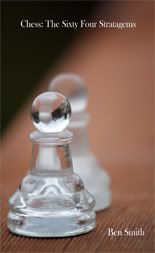
The Milgram experiment on obedience to authority figures was a series of notable experiments in social psychology experiments conducted by Yale University psychologist Stanley Milgram, which measured the willingness of study participants to obey an authority figure who instructed them to perform acts that conflicted with their personal conscience. Milgram first described his research in 1963 in an article published in the Journal of Abnormal and Social Psychology, and later discussed his findings in greater depth in his 1974 book, Obedience to Authority: An Experimental View.
The experiments began in July 1961. Milgram devised his psychological study to answer the question: “Was it that Eichmann and his accomplices in the Holocaust had mutual intent, in at least with regard to the goals of the Holocaust?” In other words, “Was there a mutual sense of morality among those involved?” Milgram’s testing suggested that it could have been that the millions of accomplices were merely following orders, despite violating their deepest moral beliefs. The experiments have been repeated many times, with consistent results within societies, but different percentages across the globe. The experiments were also controversial, and considered by some scientists to be unethical or psychologically abusive, motivating more thorough review boards for the use of human subjects.
The volunteer subject was given the role of teacher, and the confederate, the role of learner. The participants drew slips of paper to determine their roles, but unknown to the subject, both slips said “teacher”, and the actor claimed to have the slip that read “learner”, thus guaranteeing that the participant would always be the “teacher”. At this point, the “teacher” and “learner” were separated into different rooms where they could communicate but not see each other. In one version of the experiment, the confederate was sure to mention to the participant that he had a heart condition.
The “teacher” was given an electric shock from the electro-shock generator as a sample of the shock that the “learner” would supposedly receive during the experiment. The “teacher” was then given a list of word pairs which he was to teach the learner. The teacher began by reading the list of word pairs to the learner. The teacher would then read the first word of each pair and read four possible answers. The learner would press a button to indicate his response. If the answer was incorrect, the teacher would administer a shock to the learner, with the voltage increasing in 15-volt increments for each wrong answer. If correct, the teacher would read the next word pair.
The subjects believed that for each wrong answer, the learner was receiving actual shocks. In reality, there were no shocks. After the confederate was separated from the subject, the confederate set up a tape recorder integrated with the electro-shock generator, which played pre-recorded sounds for each shock level. After a number of voltage level increases, the actor started to bang on the wall that separated him from the subject. After several times banging on the wall and complaining about his heart condition, all responses by the learner would cease.
At this point, many people indicated their desire to stop the experiment and check on the learner. Some test subjects paused at 135 volts and began to question the purpose of the experiment. Most continued after being assured that they would not be held responsible. A few subjects began to laugh nervously or exhibit other signs of extreme stress once they heard the screams of pain coming from the learner.
If at any time the subject indicated his desire to halt the experiment, he was given a succession of verbal prods by the experimenter, in this order:
1. Please continue.
2. The experiment requires that you continue.
3. It is absolutely essential that you continue.
4. You have no other choice, you must go on.
If the subject still wished to stop after all four successive verbal prods, the experiment was halted. Otherwise, it was halted after the subject had given the maximum 450-volt shock three times in succession.
The experimenter also gave special prods, if the teacher made specific comments. If the teacher asked whether the learner might suffer permanent physical harm, the experimenter replied “Although the shocks may be painful, there is no permanent tissue damage, so please go on”. If the teacher said that the learner clearly wants to stop, the experimenter replied, “Whether the learner likes it or not, you must go on until he has learned all the word pairs correctly, so please go on”.
Before conducting the experiment, Milgram polled fourteen Yale University senior-year psychology majors to predict the behavior of 100 hypothetical teachers. All of the poll respondents believed that only a very small fraction of teachers (the range was from zero to 3 out of 100, with an average of 1.2) would be prepared to inflict the maximum voltage. Milgram also informally polled his colleagues and found that they, too, believed very few subjects would progress beyond a very strong shock.
In Milgram’s first set of experiments, 65 percent (26 of 40) of experiment participants administered the experiment’s final massive 450-volt shock, though many were very uncomfortable doing so; at some point, every participant paused and questioned the experiment, some said they would refund the money they were paid for participating in the experiment.




 "Drunk at the matinee" is a collection of candid poetry about stupid shit that we all experience from day to day.
"Drunk at the matinee" is a collection of candid poetry about stupid shit that we all experience from day to day.







No comments:
Post a Comment